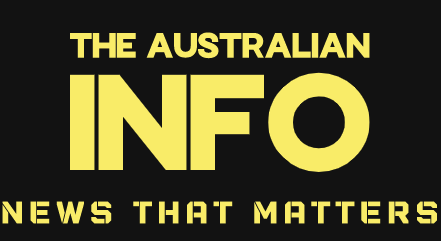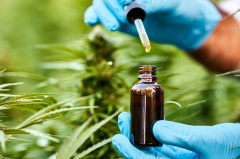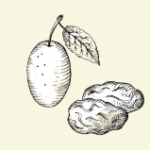Mary Jane’s coming out from pot parties and into mainstream medical practice. Though cannabis has valid therapeutic benefits, it’s not Puff the magic drug. Users need to be aware of weed warnings before getting too hemp happy.
Hashish history
“We are only beginning to understand how cannabis works. The potential benefits are enormous.” Dr. Raphael Mechoulam
Marijuana has undergone more makeovers than Madonna. Today, the tide’s turned towards greater acceptance, which some welcome and others are wary of. Many form their perspective from personal experience.
My GP client swears he can walk with less pain due to his daily dose, while a psychiatrist friend says he’s seen serious disassociation and psychosis linked to cannabis. Powerful substances tend to have the potential to heal or harm. Love it or loathe it, weed is a budding business that’s flourishing faster than lantana. Let’s track the growth of this herb from an ascetic seed to a flourishing trillion-dollar cash crop.
Many Eastern cultures valued cannabis for healing, recreation and rituals. As far back as 2737 BCE, Emperor Shen Nong prized marijuana for health issues, including arthritis. Scythians in the 5th century used ceremonial cannabis smoke. Hashish was popular in the 10th century in Middle Eastern artistic circles. Sufis in the 11th-12th century valued hashish for heightened spiritual states.
Ancient ayurvedic medicine prescribed cannabis as an analgesic, anti-diarrhoeal, aphrodisiac, appetite stimulant, euphoric, expectorant and sedative. It’s included in classical preparations such as Jatiphaladi Churna for malabsorption and respiratory issues. The Atharva Veda has mixed reviews about marijuana. It’s exalted as one of the five most sacred plants but is also classified as a mild toxin that must be purified. Ayurveda warns that extensive use can cause agitation, anxiety, apathy, confusion, dehydration, delusions, overheating and more. The Sanskrit for cannabis is bhaṅgā which translates as break. In this sense it can break one’s identification with the mind/body, offering temporary respite from overreacting and overthinking.
Marijuana wafted to the west where it was taken primarily for pain. Famous users include Queen Victoria whose physician Dr John Russel Reynolds prescribed it for dysmenorrhea. The US joined the joint revolution in the 1900s – 1930s, using it for anxiety, insomnia and pain. A reefer madness campaign claiming whacky tobaccy turns smokers into sex maniacs led to its prohibition in America in 1937. However, until 1942 it was listed in the US pharmacopoeia as a treatment for many conditions including neuralgia. Sixties hippies revived the green dream as a way to tune out and turn on to transcendental experiences. Rastafarians including Bob Marley felt marijuana “reveals you to yourself.” They exalted hemp as a sacramental substance for rituals and “reasoning sessions.” Modern day Churches of Cannabis (Colorado) and Church of Ubuntu (Newcastle) hail hemp as a superior healing herb.
Legal limbo
After a long war on weed, pot propaganda is subsiding with marijuana’s medicinal merits re-emerging along with its conditional legal use in many regions. However, countries still largely prohibit the cultivation and use of hemp including Indonesia, Japan, Nigeria, Russia, Singapore, UAE and Saudi Arabia.
The US revolution came in 2018 with the Farm Bill declaring it legal to produce hemp that contains less than 0.3% tetrahydrocannabinol (THC). Hence low THC cannabis is readily available in the USA in an amazing assortment of strains and forms including edible “Girl Scout Cookies.” There are countless places in the US you can get over the counter cannabis beverages, edibles, oil, patches, suppositories, tinctures, topicals, vapes and old school bud.
In Australia and New Zealand hemp is legal for food and industrial use but restricted to prescription only for medicinal use. This may shift as 80 per cent of people felt personal use of cannabis should be decriminalised in the Australian 2022-2023 National Drug Strategy Household survey. The ACT is leading the way to change when in 2020 it declared it legal for over 18’s to have up to 50gms cannabis for personal use and to grow two hemp plants at home per person with a maximum of four plants per household if kept and used in a place not visible to the public.
The Nimbin Hemp Embassy, hempembassy.net, is campaigning for cannabis freedom in Australia. CBD containing less than 0.01 per cent THC is legal in Australia for adults up to a maximum of 150 mg/day to be supplied over-the-counter by a pharmacist without a prescription however there doesn’t appear to be any TGA approved products meeting this criteria currently, most likely due to the cost of product registration. According to ABC news, “Expert clinical groups including physicians, psychiatrists, the Australian Medical Association and Australasian Society of Clinical and Experimental Pharmacologists and Toxicologists opposed the down-scheduling, citing the lack of safety data, lack of efficacy data, issues with product labelling and the potential for interactions with prescription medicines.”
Only some doctors in Australia are approved through the TGA to prescribe cannabis via the Special Access Scheme or Authorised Prescriber Scheme. The cost of prescribed cannabis can be higher than illegally purchased cannabis because it’s a relatively new and niche treatment, not covered by Medicare or private health insurance. However, some may be eligible for clinical trials on medicinal cannabis. Search “cannabis” on the Australian/New Zealand Clinical Trial Registry to access a list of all Australian medicinal cannabis clinical trials.
Drug driving
Considering THC can affect driving skills even drivers on prescribed cannabis face penalties if THC is detected. Penalties may include demerit points, fines, license suspension and criminal charges.
Money trees
After Australia legalised the use of prescribed medical marijuana in 2016 the hemp harvest is estimated to earn 1 billion by 2025. Australians purchased a whopping $400 million on medicinal cannabis in the first half of 2024 according to a report by the Pennington Institute. According to the National Drug Strategy Household Survey 2022–2023 (NDSHS), “In 2022–2023, 3.0 per cent of people in Australia had used cannabis for medical purposes in the previous 12 months, equating to around 700,000 people.” The study revealed 49 per cent of users suffered anxiety, 43 per cent chronic pain, and 6.2 per cent cancer. This has branched into a massive telehealth industry which often only prescribes their affiliated brand of medicinal cannabis reaping massive profits with some questioning the level of client care. This was investigated in a special report by ABC news, “Medicinal cannabis sales are booming but unethical prescribing is putting Australians at risk.”
The ABCs of CBD and THC
Cannabis contains over 500 constituents of which only the delta-9-tetrahydrocannabinol (THC) compound is mind altering. They key healing constituents in cannabis are cannabidiol (CBD) and TH





